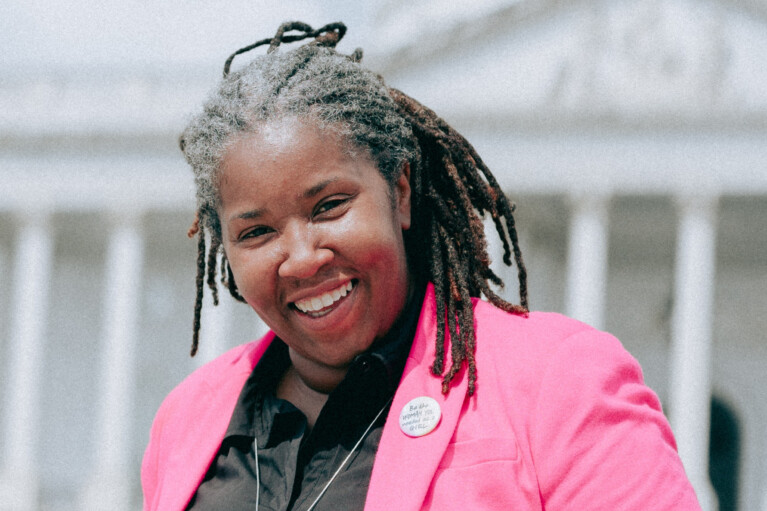Climate plan’s out. Now comes the hard part: Paying for it.

Now that the Maryland Department of the Environment has released a comprehensive plan for meeting the state’s ambitious climate and clean energy goals, policymakers in the executive and legislative branches of state government face a big, all-consuming challenge: How to pay for it all.
“The huge question is, where are you getting the money?” state Sen. Bryan W. Simonaire (R-Anne Arundel) asked Maryland Environment Secretary Serena McIlwain Wednesday as her agency briefed a Senate panel on the 98-page climate document. “When do you expect to know that?”
That’s the multibillion-dollar question with no easy response — and it isn’t likely to be answered in any conclusive way during this year’s General Assembly session.
“That’s where we all need to work together,” McIlwain told the members of the Senate Committee on Education, Energy and the Environment.
The state is on track to meet some of the major metrics laid out in the Climate Solutions Now Act of 2022, McIlwain said, including a 60% reduction in greenhouse gas emissions by 2031, carbon-neutral emissions by 2045, and 100% clean electricity use by 2035. The plan, which the Maryland Department of the Environment released late last month as required by the 2022 law, includes recommendations for how to reach various climate and clean energy goals, along with how carbon reductions can be achieved in broad sectors of the economy.
“The plan is saying, this is what it will take to reach these goals,” McIlwain said.
But the document also includes a daunting estimated price tag: That it could cost $1 billion a year over a period of years to put the programs in motion that would enable the state to meet its mandates.
McIlwain and other aides to Gov. Wes Moore (D) are saying that the goals can be achieved without raising taxes. They are touting $90 million that the administration is proposing to spend in the upcoming fiscal year to start funding greenhouse gas emissions reduction initiatives — and the fact that the funding isn’t coming directly from taxpayers. McIlwain said the money would enable the state “to start investing right away.”
But it isn’t new funding: The $90 million comes from the state’s Strategic Energy Investment Fund, which collects payments from fossil fuel power plants that buy clean energy credits through the multi-state Regional Greenhouse Gas Initiative. Those funds are generally distributed by the Maryland Energy Administration for green energy grants. So depending on how the funds are used, the budget proposal could short-change certain clean energy programs — though no one has said so yet.
Sen. Katie Fry Hester (D-Howard and Montgomery) expressed some concern that the first $90 million would go exclusively for carbon reduction initiatives at the same time the state is seeking to boost its climate resiliency, setting up a new resilience office, thanks to legislation she sponsored, within the Maryland Department of Emergency Management.
“For me, it’s a budget issue,” Hester said. “It may not be 50-50. But it’s sure not zero and a hundred.”
McIlwain said that through her agency, along with the Maryland Energy Administration, the Maryland Department of Transportation and the Maryland Clean Energy Center, the state plans to aggressively pursue hundreds of millions of dollars in federal grants and loans for climate and clean energy programs. And state officials estimate that transitioning to a clean energy economy will create 27,000 jobs, save utility ratepayers thousands of dollars a year, and pump robust revenues into the state economy.
“We’re evaluating, with all of you, new funding sources,” McIlwain said.
The Moore administration is not introducing any climate bills during the legislative session, but lawmakers are, and it’s possible the administration could wind up supporting some of them. Hester and Del. David Fraser-Hidalgo (D-Montgomery) plan to introduce legislation that would enable the state to try to collect damages from fossil fuel companies for decades of environmental degradation to the state. By Fraser-Hidalgo’s estimate, those efforts, similar to governments’ successful attempts through the years to collect money from tobacco companies for public health costs, could yield about $9 billion.
“There’s a lot of polluters in Maryland and the world and we need to make sure we think about all those things,” McIlwain told senators.
Simonaire was among the lawmakers who expressed fears that the cost of climate and clean energy initiatives, like offshore wind developments, building electrification, beefing up electric vehicle infrastructure and closing coal plants, would largely be borne by utility customers.
“There’s this constant pressure on the ratepayer,” he said. “Where are we getting a billion dollars? And what kind of impact will it have on the ratepayers?”
McIlwain said state officials are trying to protect Marylanders’ pocketbooks “as much as we can” as the deliberations move forward.
“This is not going to be easy,” she conceded.
Sen. Cheryl C. Kagan (D-Montgomery), the committee vice chair, seemed to sum up the view of many of her colleagues on the MDE report and battle plan.
“A lot of good news in here and a lot of work in progress,” she said.




 Creative Commons Attribution
Creative Commons Attribution